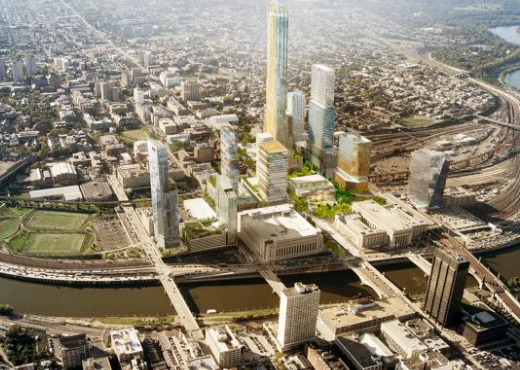Philly’s University City: The urban challenge in a nutshell
The knowledge economy . . . tax breaks . . . NIMBYism . . . gentrification . . . Amazon’s HQ2 . . . high speed rail . . . university economic development? All this in one location.
Many conversations about the nation’s urban challenges address individual issues as if they were separate and distinct from one another (zoning, transportation, housing affordability, economic development, etc). But in reality, a careful analysis will show that these things are often inextricably interrelated. There’s one neighborhood in Philadelphia that brings all these strands together. This particular story has almost all of our favorite urban themes wrapped in a single bundle, from urban revitalization and anchor institutions, to gentrifying neighborhoods, to NIMBYism, to town-gown conflicts, to convoluted local development approval processes and tax breaks with just a hint of Amazon HQ2 thrown in for good measure.
PlanPhilly’s Jim Saksa has a long, but worthwhile read exploring the redevelopment of University City, the area near the city’s 30th Street station and adjacent to the Drexel University and University of Pennsylvania. His article “As Drexel transforms University City, communities nearby prepare for gentrification” is available both in text and as a public radio podcast, courtesy of NPR station WHYY.
Big plans are afoot for redeveloping the area, and they raise, in a geographic nutshell, many of the current controversies in urban policy. Brandywine Realty is proposing “Schuylkill Yards”-a $3.5 billion (yes, with a “b”) redevelopment of 14 acres, to include millions of square feet of office space. The project has immediate access to the Northeast Corridor, is directly across the river from Center City Philadelphia. The site is short-listed as a potential location for Amazon’s HQ2, should it come to Philadelphia. However you like to characterize urban development strategies (tied to great transit, redeveloping brownfields, eds and meds, innovation district) you’ll find it here.
You’ll want to read the entire article, but here’s a short litany:
Growing enrollments, especially at Drexel, are bringing lots more young adults to the area, with housing demand spilling over into adjacent neighborhoods. The universities have built more student housing, but its expensive, and students looking for more affordable options are bidding for apartments in nearby neighborhoods.
The neighbors, concerned about rising rents, home prices and displacement, have persuaded the city (with the university’s support) to downzone many of these neighborhoods. While perhaps good for incumbent homeowners, this step further constrains the supply of housing and is actually likely to further push up land prices for those parcels eligible for greater density.
Philadelphia, with its famously arcane system for building and development approvals is likely partly responsible for driving up the cost of development. Local builders complain, but acknowledge that the opaqueness of Philadelphia’s process is a profitable competitive advantage over outsiders. One of the developer’s explains:
In fact, Sweeney argues that Philadelphia’s difficult building regime even makes Brandywine money, because it’s both an investor and a developer, and the city’s idiosyncrasies keep competitors away.
“So, while you might be frustrated as a developer, as an investor, you look for markets where it’s harder to build.”
Tax policy also figures prominently in area development plans. The entire site in question has been designated one of Pennsylvania’s “Keystone Opportunity Zones” which grant generous state and local tax breaks to new job-creating investment.
Urban redevelopment is never simple, and there are lots of moving and interacting parts to consider. This close look at how these difference forces are playing out in Philadelphia’s University City provides some keen insight in to these relationships.
(Hat tip to Jon Geeting for flagging this article on twitter, and pointing out the salient bits).
This post has been revised to correctly spell Jim Saksa’s name, and credit WHYY’s PlanPhilly for the original story and broadcast.


